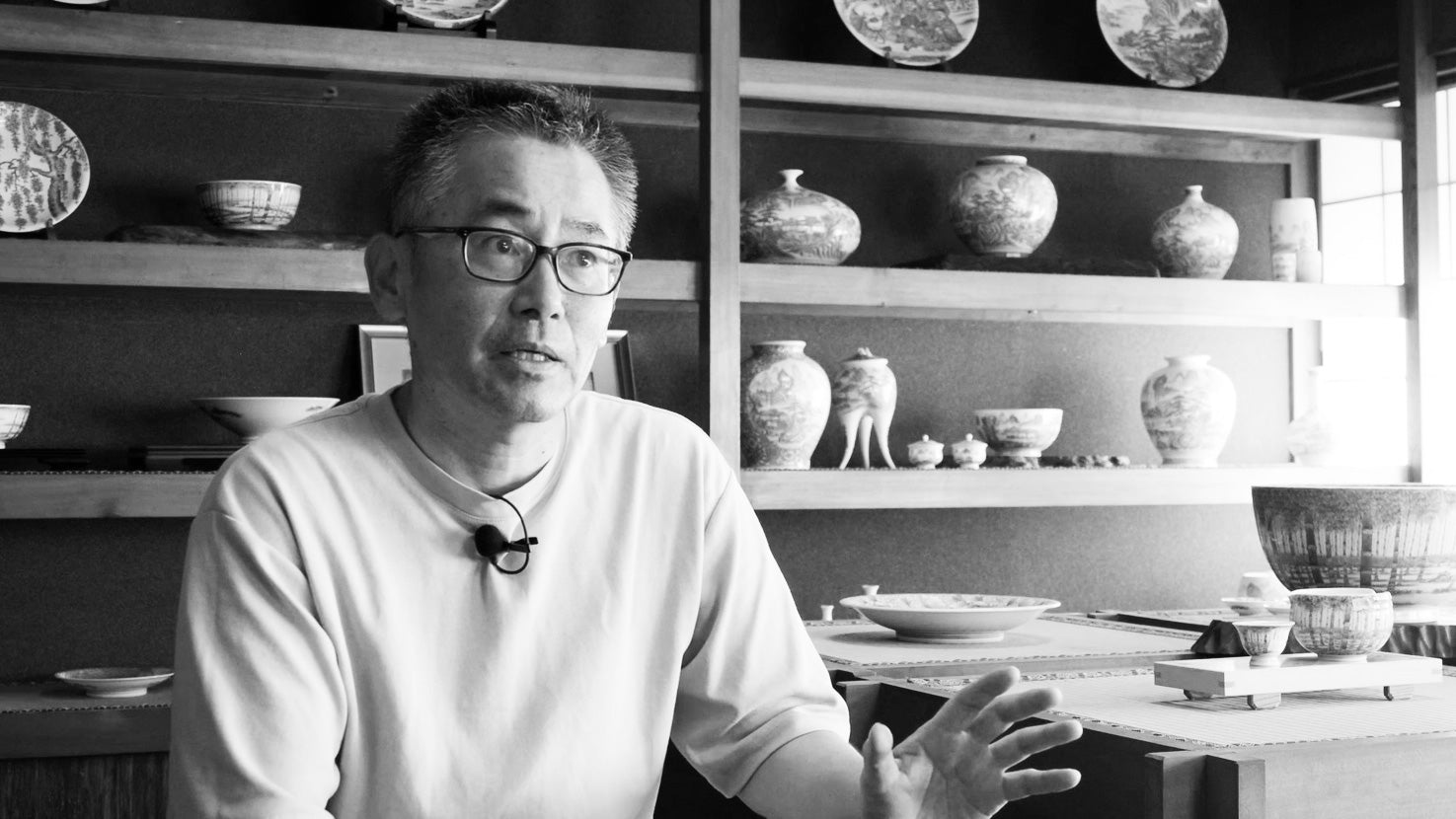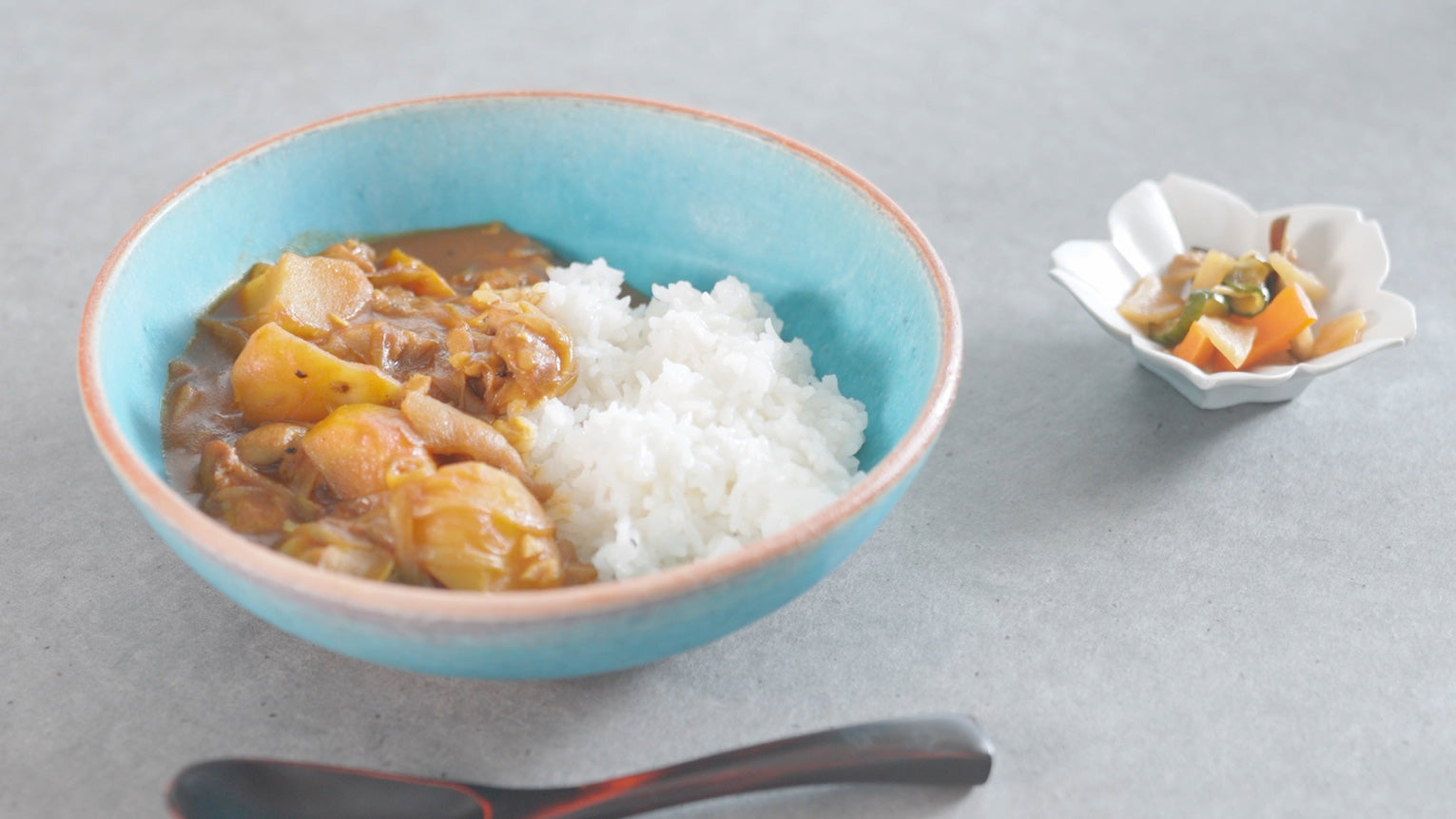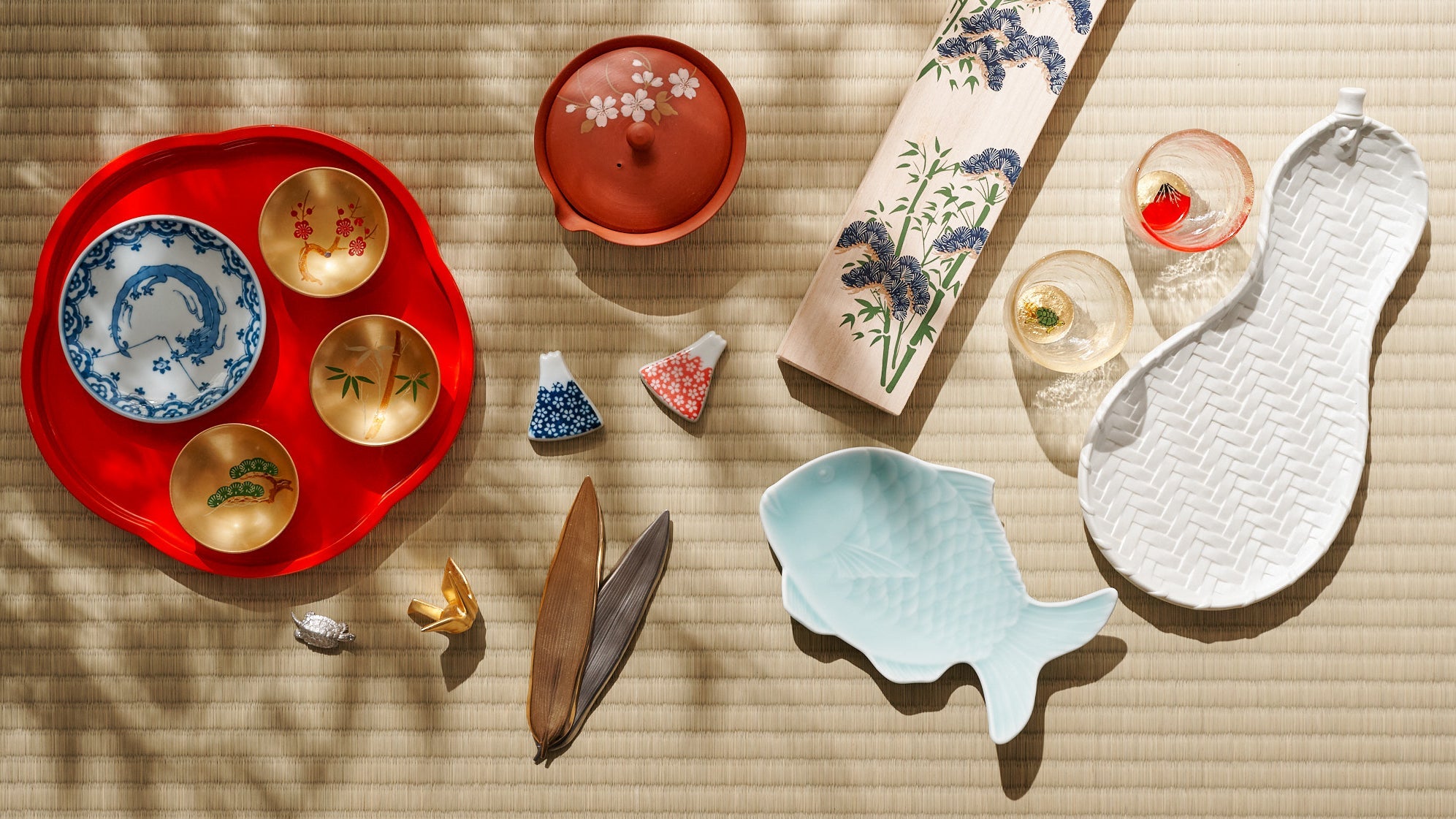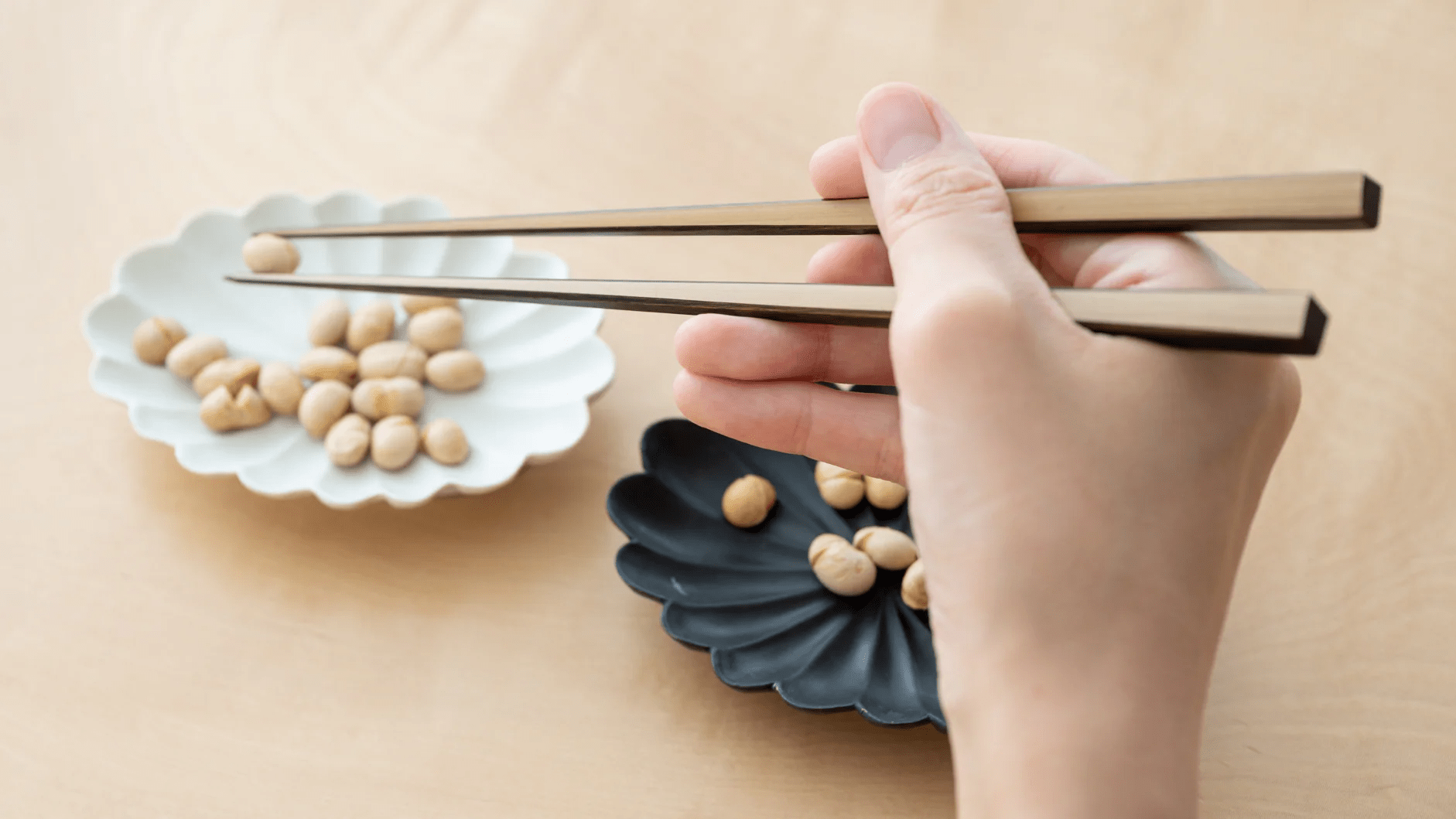
Quiet Passion in Every Brushstroke: The Artistry of Satomi Toshitaka
Written by Team MUSUBI
Tucked away in the tranquil mountains of Nagasaki Prefecture lies Mikawachi, a village where the art of porcelain has quietly flourished for over four centuries. Known for its delicate white porcelain and intricate brushwork, Mikawachi ware continues to embody a refined aesthetic that speaks of both history and craftsmanship.
Among the kilns carrying on this legacy is Kakusho Kiln, where tradition is not only preserved but also gently reimagined through the hands of Satomi Toshitaka.
While gazing at the pure white porcelain, Satomi remarks, "You can only truly understand the brush through repetition." There is a quiet intensity in his focus, and in each stroke of the brush, one senses a depth of experience that cannot be taught—only earned through time and dedication.
In this article, we explore Satomi’s path as a craftsman, the techniques he has refined, and the quiet conviction that guides his work in shaping the present and future of Mikawachi ware.
Table of contents
The Path to Becoming a Craftsman
A Childhood Surrounded by Craftsmanship
Satomi Toshitaka grew up with pottery at the heart of his everyday life. The workshop was just next door—a space that is now the showroom of Kakusho Kiln. The sounds of tools, the scent of clay, the steady movements of artisans—all of these were a natural part of his surroundings, quietly shaping his awareness from a young age. Whether heading to school or returning home, he would always pass by the familiar sight of someone bent over their work, brush in hand.
In the Mikawachi region, children were often identified not by their names, but by their family roles—“so-and-so’s son” or “that kiln’s child.” Satomi, too, was known as the child of a craftsman. His identity was naturally tied to his family’s work, and from the beginning, he was immersed in a culture of making.
To him, pottery was never something special or separate from life. It was part of the everyday. That quiet understanding is still evident in the gentle, measured way he speaks about his work.
Choosing the Family Path: Apprenticeship and Early Years

During high school, Satomi gradually began to consider the family craft as something more than just his background. Although he entered a university with the intention of becoming a teacher, a quiet conviction began to form within him—that perhaps his path lay elsewhere.
“It wasn’t something I was told to do,” he recalls. “But the more I heard my father speak about his own journey, the more I came to realize that this work was, in a way, my home.”
By the time he graduated, his decision was clear: he would dedicate himself to pottery.
Unlike many local craftsmen, who typically train at Arita Technical High School’s ceramics department before returning to their family kilns, Satomi chose to gain experience outside of his hometown. He first studied for a year at a craftsman training school in Kyoto, and then spent four years apprenticing under Takano Shoami, a respected artisan. There, he was entrusted with every step of the process, including overglaze decoration, a technique not traditionally practiced at his family kiln.
During breaks, he was also allowed to use the kiln for personal research and experimentation—an invaluable opportunity to explore his own creative direction.
One of the most striking experiences during his apprenticeship was discovering just how little recognition Mikawachi ware had outside of Nagasaki. Even when he introduced himself as being from Mikawachi, most people had never heard of it. Only by saying “next to Arita” did they begin to understand.
This realization sparked a deep awareness of the importance of sharing his craft more broadly—of making it known.
But perhaps the most profound lesson came from Kyoto itself: the mindset that tradition is not merely to be preserved, but reinterpreted.
“It’s not about copying the past,” Satomi explains, “but about finding ways to make tradition resonate with the present. At the studio, we started by replicating Edo-period works, but the real goal was to reshape those pieces into something that fits with modern life.”
This way of thinking continues to guide him today, serving as a quiet but enduring compass in his creative work.
Inheriting and Honing Traditional Techniques
The Art of the Brush

One of the defining characteristics of Mikawachi ware is the elegance of its brushwork—soft, fine lines that seem to float on the white porcelain surface like strands of silk. The porcelain itself, made from carefully refined clay, is known for its smooth, luminous whiteness, which serves as the perfect canvas for this delicate decoration.
During our visit, Satomi was applying color to a small teapot using using gosu, a cobalt pigment. Surprisingly, the brush he used was quite thick. On his worktable were both gosu and Japanese tea, which he would occasionally add to the brush when aiming for a lighter tone.
By adjusting the moisture and pigment in this way, he was able to create beautiful gradations of color.
This technique, known as tsukedami, involves carefully filling in broad areas inside and outside of the previously drawn outlines. Watching him work, the process felt both meticulous and remarkably delicate.


Satomi has spent over 25 years refining this technique. His goal isn’t merely technical precision but what he calls ‘a controlled finish’—translating his vision flawlessly onto the porcelain.
“When I was younger, I often struggled to match the color in my head with what came out of the kiln,” he explains. “Sometimes the blue was too dark, or too light. I couldn’t get the outlines to appear the way I wanted.”
Over time, Satomi has developed the sensitivity to control the speed, pressure, and angle of the brush, bringing his desired finish ever closer to reality. Dami, he notes, is particularly challenging. Even the slightest variation in movement can affect the outcome. The secret, he says, is never to hesitate. Once the brush stops or wavers, the line loses its life.

For Satomi, the essence of good brushwork lies in drawing what he calls “a living line.” A line that is too careful becomes rigid; what he seeks instead is a natural rhythm and flow, something that feels alive.
“I don’t want the lines to feel overly perfect,” he says. “I want the finished piece to feel warm and comforting—something that makes you exhale a little when you hold it.”
Design as Expression
Mikawachi ware features a wide range of traditional motifs passed down through generations. One of the most iconic is the chrysanthemum, a design long associated with beauty and longevity. It remains a common feature on many contemporary pieces.
Satomi’s personal favorite is botan karakusa, a richly detailed peony arabesque pattern considered auspicious. The delicate brushwork of peonies and arabesque vines gracefully envelops the surface of the vessel, as if the flowers are blooming across the porcelain. Every detail is meticulously adorned, making it a true embodiment of the idea that a vessel can be “an artwork in full bloom.”
At times, Satomi makes conscious design choices that reflect a more contemporary aesthetic.
In one example, he uses the peony vine to represent the sun and moon. A crescent moon is expressed with a blooming peony, while the sun is suggested through a purposeful use of blank space. By reimagining the composition in this way, he creates pieces that are both rooted in tradition and quietly contemporary.
His design sensibility is shaped not only by pottery but by his encounters with other forms of Japanese craft. Satomi often visits museums and draws inspiration from lacquerware, glass, and other traditional arts. When something captures his attention, he makes an effort to understand why it resonates. This habit of reflecting on beauty—of turning feeling into thought—is key to how he develops his designs.
He also actively studies historical works, particularly from the Edo period (1603–1868 CE). Copying these pieces is not an act of imitation, but a form of learning. By attempting to reproduce the lines and forms of earlier craftsmen, he is able to rediscover their skill, intuition, and sense of balance.
“In every old piece, there’s intention behind the form. I try to go beyond the surface and uncover what the artisan was really thinking.”
This mindset—respectful of the past, but always reaching toward the present—continues to shape Satomi’s creative process today.
A Creative Philosophy Rooted in Craftsmanship

“In the beginning, I struggled with the brush,” Satomi reflects. “I couldn’t control the thickness or shading of the lines the way I wanted.” Yet, through constant repetition, something shifted—his hand gradually learned skills that his mind had not yet fully mastered.
“By drawing the same patterns over and over, the flow of the line became more natural. That kind of accumulation is essential.”
In Mikawachi ware, brushwork is not just a technique—it is a signature. The traditional karako motif, a depiction of a Chinese child that is symbolic of the region, reveals the individual style of each artisan through subtle differences in facial expressions and brushstrokes.
“People have started to say that my lines are ‘clean and precise,’” Satomi says modestly. “But when I look at the work of older generations, I realize how much I still have to learn.”

He also notes that the relationship with the brush has changed over time.
“In the past, people used brushes to write every day, so holding a brush was second nature. Now, we mostly use pencils or pens. It takes much more time and practice to become familiar with the brush today.”
When asked about younger artisans, Satomi offers thoughtful insight.
“In their twenties and thirties, many craftsmen are influenced by trends and new forms. I was the same. But I believe that period of experimentation is important. It’s how you start to find your own foundation.”
Now, with years of experience behind him, Satomi sees himself in the next generation. Their questions, challenges, and missteps are echoes of his own journey—one he now understands more deeply from a place of quiet perspective.
The Spirit Within Each Stroke

“Just keep drawing,” Satomi says simply. His words carry the quiet conviction of someone who knows that mastery is not an endpoint, but a process—one that unfolds slowly, day by day.
He does not aim for perfection. Instead, he works toward his ideal, little by little, with each brushstroke. That attitude, humble and honest, seems to inhabit the very nature of the pieces he creates.
Mikawachi ware does not seek to dazzle. It sits gently on the table, bringing a moment of stillness to daily life. When you hold a vessel from Kakusho Kiln, pause for a moment. Let your fingers trace its form, and you may begin to sense the quiet spirit that lives within the line.












Leave a comment
This site is protected by hCaptcha and the hCaptcha Privacy Policy and Terms of Service apply.